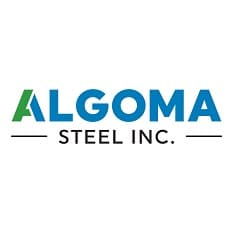Top Canadian Steel Stocks to Buy in December 2024
One of the richest men in history struck gold in the steel business.
Andrew Carnegie arrived in the United States as a penniless 12-year-old in 1848 and immediately got to work. After a stint in the railroad business, Carnegie started investing in the steel industry in the 1870s, using his connections in local railroads to get sweetheart rail contracts. By the 1890s, Carnegie Steel was the largest steel company in the nation, eventually merging with various competitors to create the mammoth U.S. Steel.
More than 100 years later, steel is integral to the world’s economy. Asia has become a significant producer as nations like China use modern production capabilities to build vast tracts of high rises. Steel is also used to manufacture heavy machinery, weapons, and energy products for the energy industry.
Canada’s steel industry has also seen significant changes over the years. Stelco dominated the space for years, but the Hamilton-based steel producer faced substantial challenges that eventually culminated in its bankruptcy. But long-term demand is still solid enough for a few players to survive.
ArcelorMittal became the largest steel producer in Canada after its 2006 acquisition of Dofasco. The Luxembourg-based company is also the world’s largest producer, operating in all sorts of global markets.
Just know that investing in steel stocks, or any commodity based stock for that matter, is not recommended for beginners. They have complex, cyclical business models. If you’re looking for beginner type stocks, have a read of this article.
Let’s take a closer look at some Canadian stocks in the steel industry, including the five best steel stocks Canadians may want to add to their portfolio.
What are the top Canadian steel stocks to buy right now?
- Labrador Iron Ore (TSE:LIF)
- Russel Metals (TSE:RUS)
- Tree Island Steel (TSE:TSL)
- Algoma Steel (TSE:ASTL)
- Stelco (TSE:STLC)
Labrador Iron Ore (TSE:LIF)

Labrador Iron Ore Royalty Corporation (TSX:LIF) isn’t exactly a steel company. It’s an iron ore royalty company, owning a 15.1% stake in the Iron Ore Company of Canada. Its only asset is an iron ore mine near Labrador City, Newfoundland. The royalty corporation gets 7% royalties on every tonne of iron ore mined.
Iron Ore is a critical raw material used to make steel, along with coke, with supply also coming from Russia, Ukraine, Australia and South Africa.
Iron ore prices are strongly tied to steel demand, which is viewed as a general economic indicator. When the economy is booming, there’s greater demand for steel, and vice versa when times aren’t so good. Generally, iron ore slumps at the same time as steel does. However, some investors swear iron ore prices are more of a leading indicator.
Since the price of iron ore fluctuates yearly, so does the company’s profits. And since it has no duty to reinvest any capital into the mine, it is free to pay massive dividends back to shareholders. From 2020-22, Labrador Iron Ore paid dividends of $3.05, $6.00, and $3.10 per share, or approximately 25% of its market cap, back to shareholders in three short years.
Russel Metals (TSE:RUS)

Russel Metals (TSX:RUS) is one of North America’s largest steel distributors and importers. The company has several revenue streams, including distributing steel, supplying a wide range of metal products for industrial customers and operating metal service centers.
The company has long been criticized for being a cyclical stock that ebbs and flows with the overall economy.
Still, management has been making progress in shedding that label. It has acquired assets, laid off staff, and focused on providing metal for industrial customers, which is the least cyclical part of the business. These initiatives are working, but it’s unlikely Russel will ever shed its reputation.
The last couple of years have been good for Russel, and management has taken the opportunity to strengthen the business. Debt decreased from a high of $445M to less than $300M. Book value per share increased substantially. The company purchased various value-added processing facilities, too. It looks poised to weather the next downturn nicely.
Finally, the company aims to pay an above-average dividend. Shares currently yield 4.75%.
Tree Island Steel (TSE:TSL)

Tree Island Steel (TSX:TSL) is one of North America’s largest steel wire producers, with two facilities in California, one in British Columbia, and one in Alberta. Products include wire for industrial, agricultural, and construction use. Tree Island is also a prominent nail manufacturer.
Although Tree Island is a small-cap stock — its market cap is slightly below $100M as I write this — the company has several things going for it.
The company has made debt repayment a priority. It now has one of the cleanest balance sheets in the Canadian steel sector. The company’s exposure to the agricultural industry means it isn’t as cyclical as many competitors. It has also been steadily repurchasing shares over the last few years.
The company shares some of these initiatives’ fruits with shareholders, including a recent dividend increase from $0.08 to $0.12 per share annually. That’s good enough for a 4%~ yield, an excellent payout.
Algoma Steel (TSE:ASTL)

Algoma Steel (TSX:ASTL)(NASDAQ:ASTL) is one of Canada’s largest steel producers, ultimately supplying industries like automobiles, manufacturing, and construction. It shipped some 2.3 million tons of steel in 2022.
One exciting thing Algoma has going for it is the company’s plans to construct a plant with an electric arc furnace. This project is slated to improve Algoma’s carbon footprint by more than 70% by 2024.
It should also increase production and make Algoma a low-cost producer all at the same time. Governments are very interested in the project and have committed to help fund it. No wonder Algoma is calling this a “generational opportunity.”
Over the next couple of years, Algoma is projecting higher production, including a 9% increase in 2023. The company has also spent much of the last couple of years shoring up the balance sheet and repurchasing shares, including a whopping 41 million shares in 2021. Algoma also repaid some $400M in debt since the beginning of 2021 and enters 2023 with $300M in net cash. This company is built to survive the next recession.
When everything goes right, Algoma can generate monster earnings. In fiscal 2022 the company earned nearly $8 per share. The share price in early 2023 was approximately $11, putting this stock at slightly more than 1x trailing earnings. That’s an incredibly attractive multiple if the company can keep up earnings, which unfortunately looks unlikely.
Stelco (TSE:STLC)

Stelco Holdings (TSX:STLC) has a long history of operations in the Hamilton area, ultimately resulting in the company entering bankruptcy protection. Twice. It emerged from its latest bankruptcy in 2017 and relisted on the Toronto Stock Exchange in 2020.
Don’t get too caught up on the previous bankruptcies. Stelco has more than $600M in net cash, is rapidly repaying its existing debt, and is using the rest of its cash flow to repurchase shares.
The company reduced its share count by approximately 20% in fiscal 2022.
Like Algoma, Stelco has put up some eye-popping earnings numbers. Shares trade at just 2.5x 2021’s earnings and less than 6x 2022’s bottom line. Analysts expect earnings to contract in 2023 but still earn more than $4 per share. That puts the company at approximately 12x forward earnings.
Stelco also has investing royalty as its largest shareholder. Fairfax Financial (TSX:FFH), a well-renowned Canadian value investor, has a 23.6% stake in the steel producer. They’re the kind of people you want in your corner.
